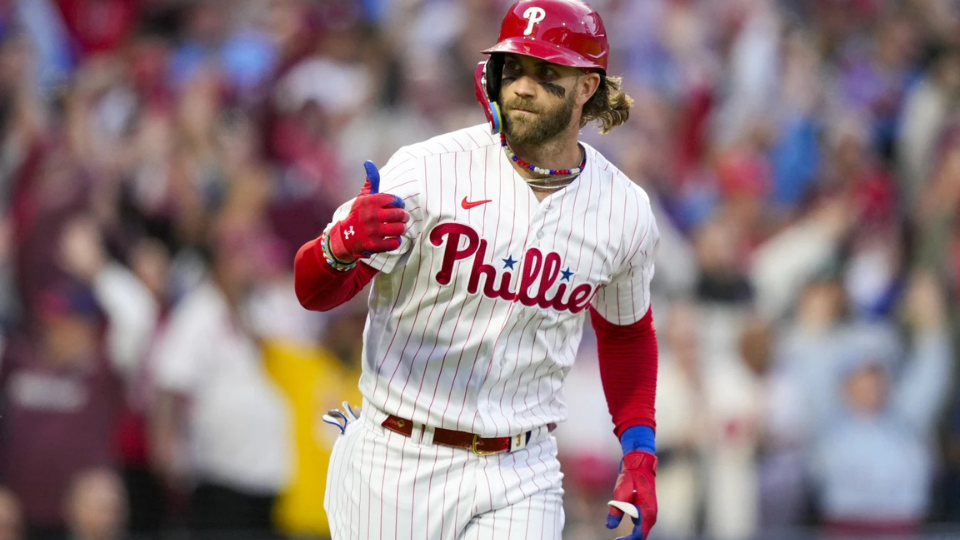Philadelphia Phillies’ Bryce Harper. | Matt Slocum/AP
The Struggles of the Philadelphia Phillies
The Philadelphia Phillies aimed to replicate their success since reaching the World Series in 2022, hinging their hopes on stars like Bryce Harper, Trea Turner, and Kyle Schwarber. With a staggering combined contract worth approximately $709 million, their regular season efforts showcased impressive talent. Schwarber led the National League (NL) with a career-high 56 home runs, while Trea Turner maintained the top batting average in the NL despite injury setbacks. Harper, though quieter compared to previous years, still performed admirably.
Disappointment in the Postseason
Unfortunately, the Phillies faced another early postseason exit, losing to the Los Angeles Dodgers in the fourth game of the NL Divisional Series. In this crucial game, their million-dollar stars managed just one hit in fourteen at-bats. Philadelphia sports commentator Hunter Brody criticized the team’s offensive strategy, indicating that their talent is not translating into postseason success.
Exploring Team Dynamics
How can a team with the second-best record in baseball fail so dramatically in October? Examination of their roster reveals significant insights. The Phillies remain the only team in Major League Baseball (MLB) without a Black player on their Opening Day roster since 2022. This lack of diversity is noteworthy, especially given that around 40% of 2023’s Opening Day rosters feature players from varied backgrounds. Furthermore, 18 of the 26 players rostered for the 2025 postseason are white, the highest percentage among playoff teams.
The Case for Diversity
Increasing diversity within the team’s clubhouse might enhance their postseason performance. Other franchises are recognizing the talent in underrepresented players, as 49% of 2023’s top 100 prospects come from diverse backgrounds. With an average team age of 30.17, it may be time for President of Baseball Operations, Dave Dombrowski, to infuse younger talent into the roster.
Shifting Trends in Major League Baseball
This isn’t to suggest that simply diversifying the roster will solve the team’s problems. However, there’s a clear trend in scouting focusing on talent from non-majority white nations, such as Japan and Venezuela. Over the last few decades, the proportion of MLB players born in the mainland U.S. has significantly dropped from approximately 89% in 1975 to about 73% today.
Successful Diverse Franchises
Teams that prioritize diversity seem to be thriving. The Los Angeles Dodgers, recent World Series champions, have a roster containing many players from diverse backgrounds, with ten Opening Day members born outside the U.S. Similarly, the Seattle Mariners feature a varied lineup, including respected Black veteran shortstop J.P. Crawford, who has enjoyed a productive season.
Reflection on Team History
The current Philadelphia Phillies differ greatly from the 2008 World Series championship team, which included Black stars Jimmy Rollins and Ryan Howard, alongside Shane Victorino. This previous lineup mirrored the diversity of the city they represent. While diversifying the roster may not be a guaranteed solution for the team’s struggles, a roster comprising 70% white players is unlikely to secure future victories in the postseason.
As with all op-eds published by People’s World, the views reflected here are those of the author.



